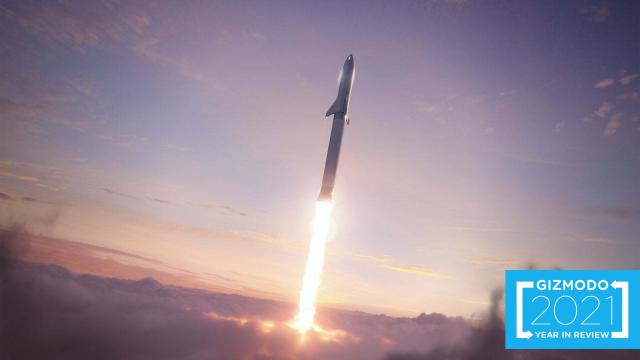Humanity’s reach into space has never been greater, with 2022 promising to be one of the most thrilling yet. Here are the space stories we’ll be watching in the coming months.
The inaugural flight of NASA’s Space Launch System
One of the most anticipated events of the year happens next spring, or so we hope. NASA will attempt the inaugural launch of its 101.19 m-tall (101 meters) SLS rocket, effectively kickstarting the Artemis era. It’ll be an impressive sight, as the rocket will exert 8.8 million pounds of thrust at liftoff — 15 per cent more than NASA’s Saturn V rocket. For this, the Artemis 1 mission, an uncrewed Orion spacecraft will travel 280,000 miles (450,000 km) to lunar orbit and promptly return to Earth.
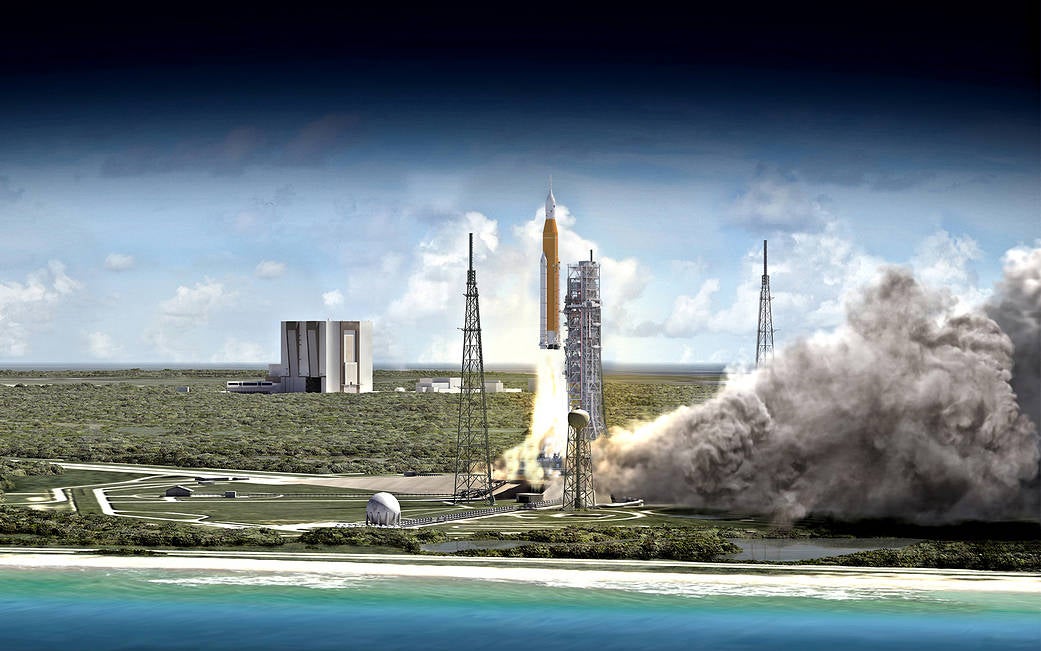
Launch windows for Artemis one occur in mid-March and mid-April. A successful launch of SLS will set the stage for Artemis 2 (scheduled for 2023), in which a crewed Orion capsule will travel around the Moon and back (basically a repeat of Artemis 1, but with astronauts), and Artemis 3 (scheduled for no earlier than 2025), in which NASA astronauts will land on the Moon for the first time since 1972.
The inaugural orbital flight of SpaceX’s Starship
SpaceX will also attempt the launch of an oversized rocket, likely in either January or February. The reusable Starship megarocket will consist of the Super Heavy Booster 4 and Starship prototype SN20, which, at a combined 394 feet (120 meters) in height, will be the tallest rocket ever built. Launching from SpaceX’s Starbase facility in Boca Chica, Texas, the rocket will enter Earth orbit but complete less than full rotation of the planet. The booster will splash down in the Gulf of Mexico, while the second stage will splash down in the Pacific near Hawaii.

SpaceX CEO Elon Musk said there’s “a lot of risk associated with this first launch,” and he’s candidly predicting a failure. That said, he believes a Starship rocket will reach orbit in 2022 and that upwards of 12 Starship launches could take place over the course of the year. Progress will be important, as SpaceX is developing the rocket to serve as the landing craft for NASA’s upcoming Artemis missions on the Moon.
Other rockets expected to make their maiden flights in 2022 include Arianespace’s Ariane 6, Blue Origin’s New Glenn, United Launch Alliance’s Vulcan Centaur, and Mitsubishi’s H3.
The second uncrewed test of Boeing’s CST-100 Starliner
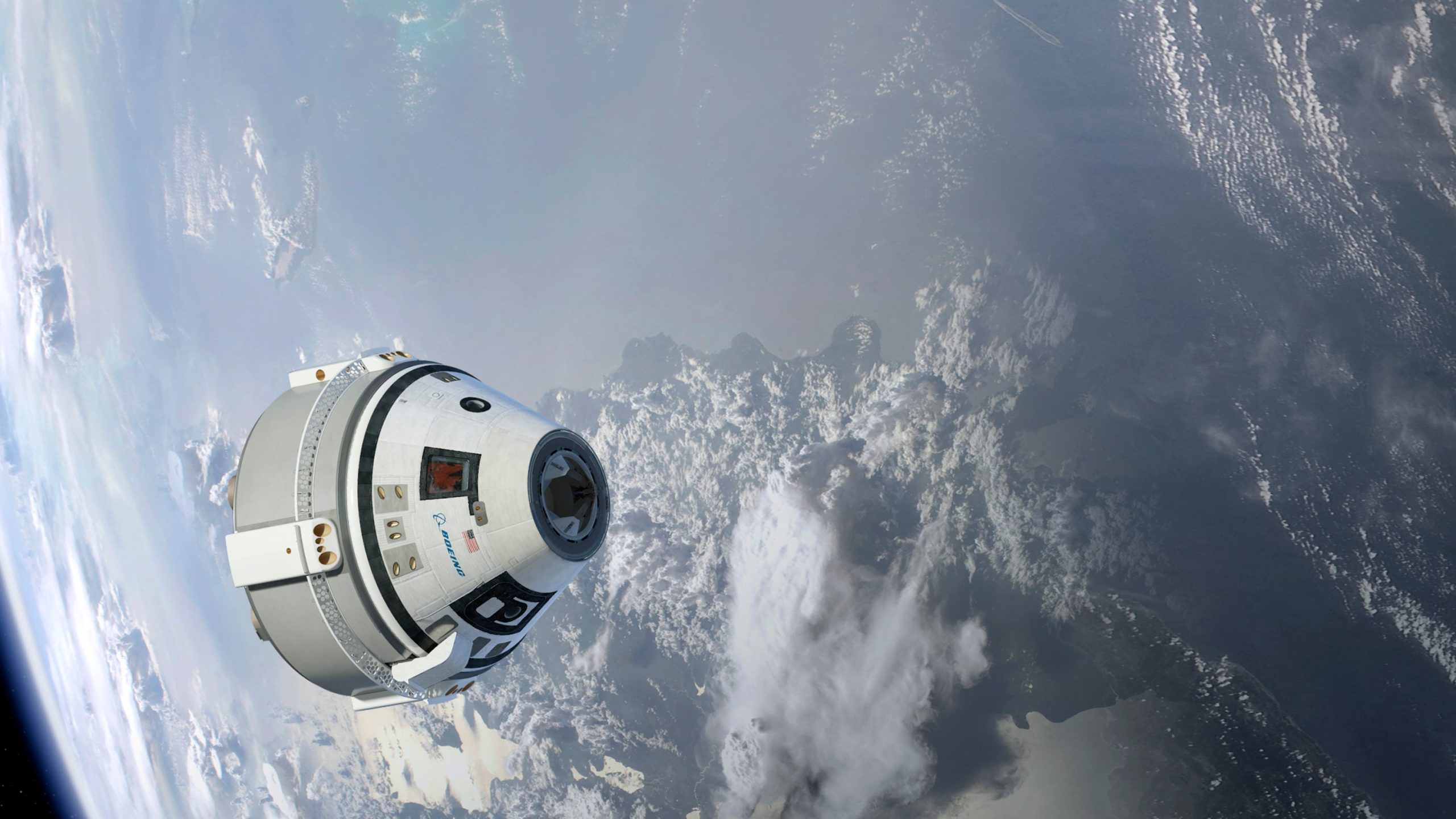
Speaking of pressure, all eyes will be on Boeing to see if the beleaguered company will finally make progress with its CST-100 Starliner. Boeing is developing the capsule as part of NASA’s Commercial Crew Program, but it’s now years behind schedule. A major setback occurred in October 2021, when Boeing Orbital Flight Test 2 (OFT-2) had to be scrubbed after 13 of 24 oxidiser valves in the spacecraft’s propulsion system failed to open. The inaugural test of Starliner in 2019 was a total mess, making this latest incident all the more embarrassing. Boeing is now seeking to launch Starliner in May 2022, “pending spacecraft readiness and space station availability,” according to NASA.
A helicopter will attempt to catch a falling rocket booster

In 2022, aerospace manufacturer Rocket Lab will attempt to catch a falling Electron rocket booster mid-air and then return it to the mainland for reuse (Rocket Lab performed a successful test of this idea in April 2020). A parachute system will slow the booster during its descent, while a special engagement line on the helicopter will enable it to capture and secure the booster. An auxiliary fuel tank will be added to the helicopter, allowing for an extended journey. Rocket Lab expects to perform this daring catch during the first half of 2022.
To the Moon!!
No humans will reach the Moon in 2022, but the same cannot be said for landers and robots, with the United States, Russia, India, and Japan all preparing for lunar missions in the coming year.

Pittsburgh-based Astrobiotic is planning to send its Peregrine Lunar Lander to the Moon at some point in 2022. The mission is part of NASA’s Commercial Lunar Payload Services (CLPS) initiative, in which the space agency contracts with commercial partners. The lander, equipped with 14 payloads of various types, will launch atop a United Launch Alliance Centaur rocket.
Houston-based Intuitive Machines, another CLPS partner, is currently planning to send its Nova-C lander to the Moon, which it expects to do during the first half of the year with the lift coming from a SpaceX Falcon 9 rocket. Nova-C will deliver 220 pounds (100 kg) worth of goods to the lunar surface.
In July 2019, India’s Chandrayaan-2 mission failed to safely deliver the Vikram lander to the lunar surface. The Indian Space Research Organisation will try again during the third quarter of 2022 in what will hopefully be a successful sequel — the Chandrayaan-3 mission. Should India pull it off, it’ll become just the fourth country to successfully land a probe on the Moon (the others being the United States, Russia, and China).
In July 2022, Russia will be sending its Luna 25 lander, also known as the Luna-Glob-Lander, to the southern polar region of the Moon. The purpose of the mission is to analyse the “composition of the polar regolith, and to study the plasma and dust components of the lunar polar exosphere,” according to NASA.
The Smart Lander for Investigating Moon (SLIM) will be Japan’s first mission to the Moon. The purpose of SLIM is to test precision lunar landing capabilities, such as avoiding craters and selecting optimal locations for touchdown. The probe, developed by the Japan Aerospace Exploration Agency (JAXA), is expected to launch at some point in 2022 and land near the Marius Hills Hole — a lunar lava tube entrance.
Another rover for the Red Planet
The European Space Agency’s Rosalind Franklin rover, along with Russia’s Kazachok lander, is scheduled to launch on September 29. Once at Mars, the Rosalind Franklin will collect surface samples and crush them into a fine powder. Its onboard laboratory will then perform detailed chemical, spectral, and physical analyses. The rover’s navigational capabilities should allow it to travel around 328 feet (100 meters) every Martian day, or sol.
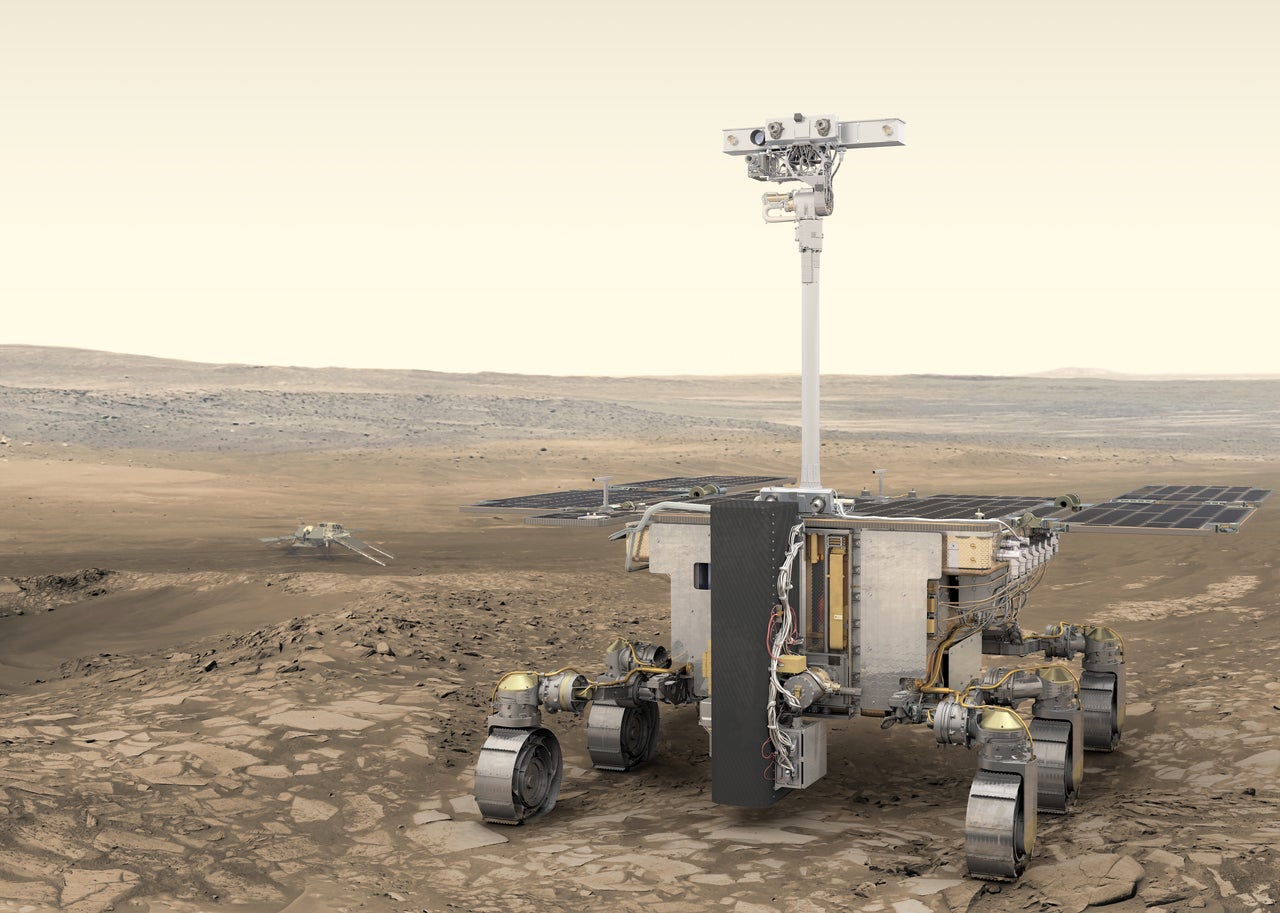
Meanwhile, we can expect new insights from NASA’s Curiosity and Perseverance rovers (and perhaps more flights of the Ingenuity helicopter), and also China’s Zhurong rover. NASA’s InSight mission will continue to operate in 2022, but this is likely to be its final year, as the stationary lander is struggling to collect solar power.
Space probes probing space
In August, a SpaceX Falcon Heavy rocket will attempt to deliver NASA’s Psyche probe to space. It’s destination is 16 Psyche — a metallic asteroid containing copious amounts of nickel-iron. The asteroid “offers a unique window into the violent history of collisions and accretion that created terrestrial planets,” according to NASA. The mission could shed new light on the composition and age of Psyche’s surface, and the conditions under which it formed. Data from the probe will also be used to create a detailed map of the asteroid’s surface. The Psyche probe is expected to reach the asteroid in January 2026.

The same launch of the Falcon Heavy will deliver two smallsats for NASA, but they’re headed elsewhere. Known as the Janus project, the dual spacecraft will explore two binary asteroids, (175706) 1996 FG3 and (35107) 1991 VH. Daniel Scheeres, the principal investigator of the project and an astronomer at the University of Colorado, says binary asteroids “are one class of objects for which we don’t have high-resolution scientific data,” as all existing observations come from ground telescopes, “which don’t give you as much detail as being up close.” Janus, in addition to furthering our understanding of the early solar system, could also inform planetary defence measures. It’ll take four years for the probes to reach their destinations.
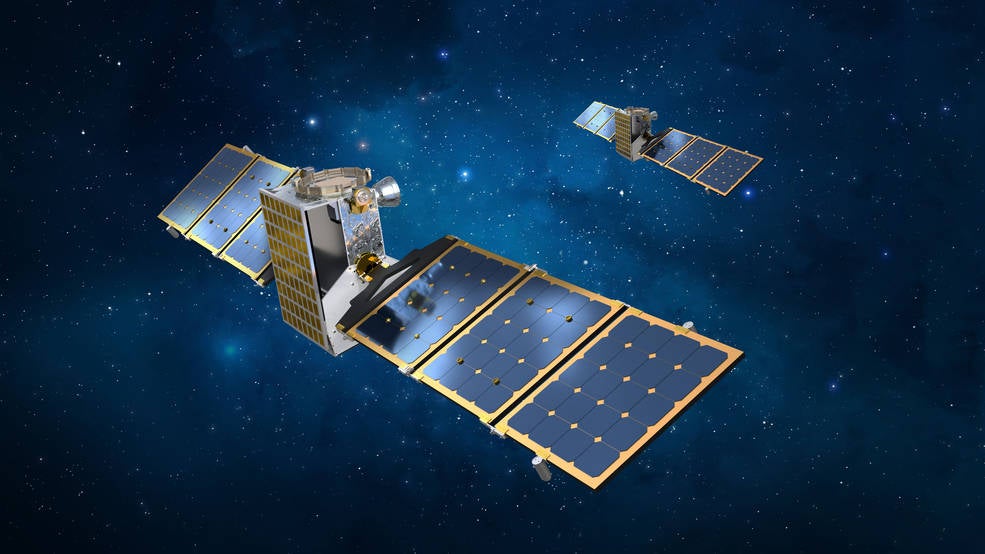
Probes already launched to space will continue to do their work. NASA’s Juno spacecraft will perform a close fly-by of Jupiter’s moon Europa on September 29, after which time its orbital period around the gas giant will be reduced from 43 to 38 days. The Parker Solar Probe, also managed by NASA, will perform four flybys of the Sun in 2022, as it gets increasingly closer to our host star.
In addition, the $US10 billion ($14 billion) Webb Space Telescope, which launched on Christmas Day 2021, will travel to its special spot in space — Lagrange Point 2 (an area of space where gravity from the Sun and Earth balance the orbital motion of an object). Once at L2, and after Webb’s instruments are successfully deployed, we’ll finally get to see Webb’s first view of the cosmos.
Astronomical happenings
No total solar eclipse will happen in 2022, but there will be two partial solar eclipses. The first happens on April 30, when the partial eclipse will be visible from the southern portions of South America, and the second will occur on October 25 and be visible to skywatchers in Europe and parts of northern Africa (weather permitting, of course).
A partial lunar eclipse on May 15/16 will be visible in parts of North America and all of South America, while a partial lunar eclipse on November 7/8 will appear primarily over the Pacific Ocean, with western parts of North America and eastern Asia also catching a glimpse.
So buckle up and grab some kool-aid — looks like we’ve got another amazing year in space ahead.
